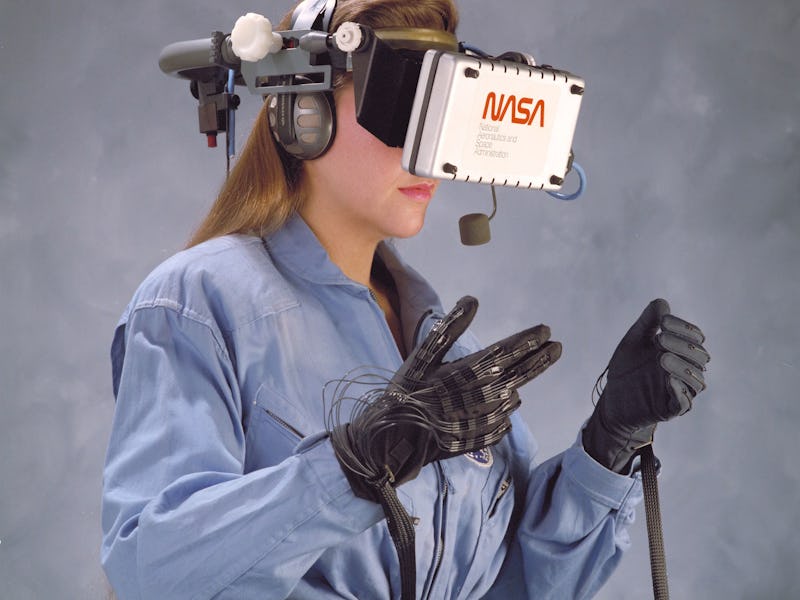NASA has always come up with clever ways to train its astronauts and engineers for outer space missions while safely down on Earth — like that 6.2-million-gallon neutral buoyancy pool. Soon, though, NASA says it’ll add another technique to its toolbox: virtual reality.
“This is just going to be like any other tool,” Josh Kinne, a deputy project manager in NASA Langley’s Flight Projects Directorate, said in a NASA release, explaining that there are a number of ways that VR and its cousin, augmented reality, could help NASA explore the final frontier.
For instance, Kinne suggested, two engineers working in different parts of the world could don VR headsets and work in the same virtual space together.
“They could be a different NASA center or anywhere else” he explained. “We want them to be able to look at the same virtual scene and communicate with each other and to interact with that scene.”
Though the role of VR and A.R. in NASA’s training will inevitably become more complex as the technology advances, it’s already being used. Lockheed Martin revealed that they’re using VR inside of other VR to demonstrate what the planned Mars Base Camp experience would be like. Actual VR training could come in the future.
Lockheed Martin is already using VR inside of other VR.
The Microsoft HoloLens, an A.R. tool that projects three-dimensional images, is already up at the International Space Station.
VR has also been used as a form of outreach, taking students on virtual field trips to get them excited about space exploration.
NASA is currently playing around with HoloLens, Oculus Rift, and HTC Vive products. “This is not a technology that NASA needs to invent for itself,” NASA Information Technology Specialist McLarney noted. “It’s one where industry and academia [are] inventing it for us and we need to figure out how to apply it.”
“The future is here and we got to get with it,” McLarney continued. “It’s another game-changer that’s upon us now.”
“This is going to be the way we visualize information going forward,” Kinne said, “and this is going to be a standard tool we take for granted in another 10 years.”
